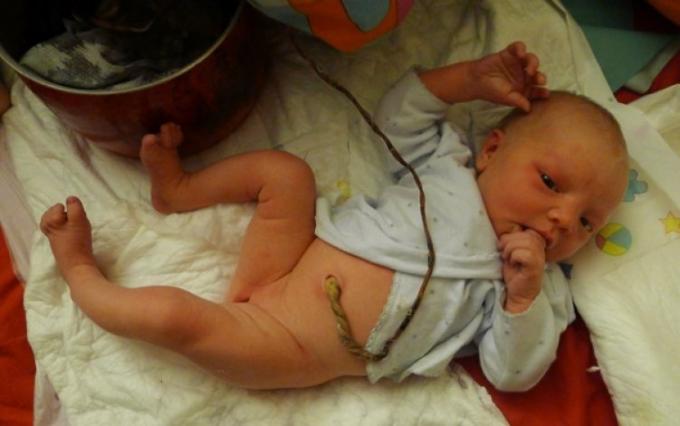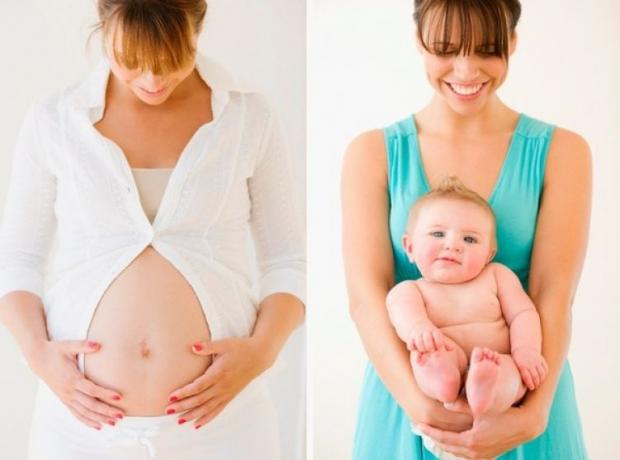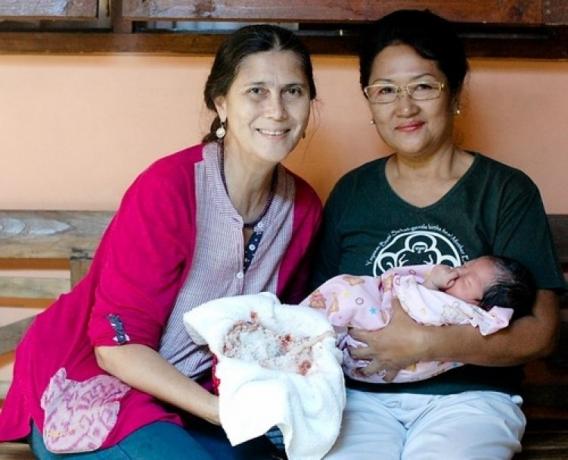Hundreds of thousands of years ago, nature gave a woman a way to give birth to children, but mankind continues to search for the best way that will be optimal for mom and baby. We will tell you what is special about lotus births. Are they not dangerous for a newborn baby?
Why was childbirth called lotus?
This is the original name for the method of natural childbirth, in which the child retains a connection with the umbilical cord and placenta after birth. Yes, yes, you understood correctly: if during normal childbirth the doctor waits until the umbilical cord stops pulsing and cuts it, then in lotus labor, the doctor waits for the "birth" of the placenta (the final part of labor) and puts it next to the baby. For a while, the placenta and the baby will be close - in an inextricable literal connection.
Why is this needed?

Best of all, the famous French obstetrician F. Loboyer in his book «For a birth without violence ": “Early cutting of the umbilical cord in the maternity hospital leads to a burn of the baby's lungs, a loss of 50-100 ml of blood (valuable stem T cells), and also makes him stressful due to such a rude interference.
We will not touch the pulsating umbilical cord, so that the baby's transition to his own breathing with the lungs is slow and natural, and the birth is awakening from a pleasant sleep. Nature has made sure that at the time of a difficult test - birth, the baby receives oxygen from two sources: feeding through the mother's placenta and periodically inhaling by the lungs, gradually switching to the pulmonary breath. So he is probably protected from asphyxiation ".
How did lotus labor come about?
According to the first version, the process of preserving the umbilical cord and placenta, which was accepted in Bali, is compared to a lotus flower - lotus, stem and root. According to another version, this name of the genus is explained the tradition of wrapping the placenta in lotus leaves.
How is lotus labor going?
All the difference from natural childbirth is that the umbilical cord is not cut after the birth of the baby - it is next to the baby for several more days until the umbilical cord dries up.
This is how Robin Lim, a midwife and founder of the Healthy World clinic in Bali, explained the essence of lotus birth: “We must remember that by leaving these three important links together intact: baby, mother and placenta.

We guard the birth. With the help of additional blood from the placenta, the baby receives the iron, oxygen and precious stem cells he needs. This leads to an increase in his health and intelligence, which are containers for consciousness. "
How to properly care for the placenta?
During her stay next to the baby, she is placed in a separate container (basin) next to the newborn baby, and periodically washed, treated with salt and special herbs (you can easily find the details of care in Internet).
Where is lotus childbirth practiced?

As we have already noted, the island of Bali has become a kind of Mecca for lotus genera. Modern medicine is very developed here, however, most of the inhabitants of the island choose this particular type of childbirth.
In Bali, there are special centers in which to help the birth of "lotus children". One of the most famous clinics specializing in lotus birth is Bumi Sehat, women come here to give birth from all over the world.
Is lotus birth dangerous for a baby?
The lotus birth method has a number of pros and cons.
Pros:
- such childbirth contributes to the most smooth transition of the child from one environment to another;
- the placenta, which is preserved during lotus birth, saturates the baby's body with valuable trace elements through the blood;
- the method minimizes the development of anemia in the child;
- with such childbirth, mothers have no problems with caring for the umbilical wound (the baby does not have such a wound by default).
- the risk of developing jaundice in a newborn;
- discomfort with constant movement of the placenta;
- the risk of moving harmful substances accumulated during pregnancy from the placenta into the baby's body.


